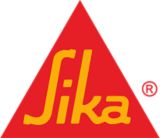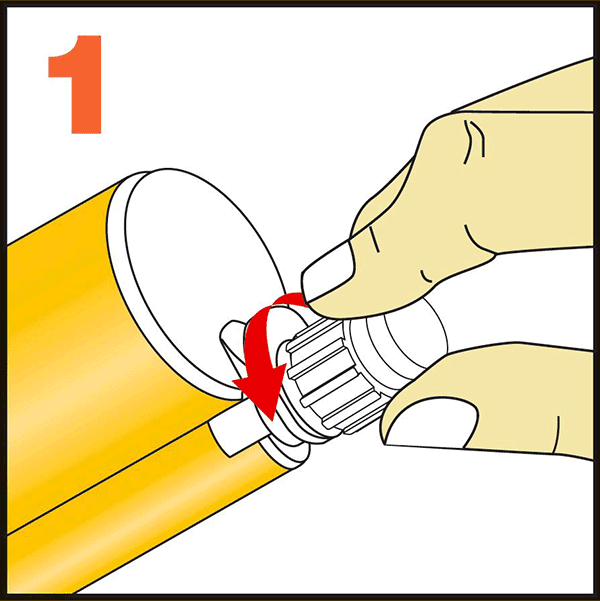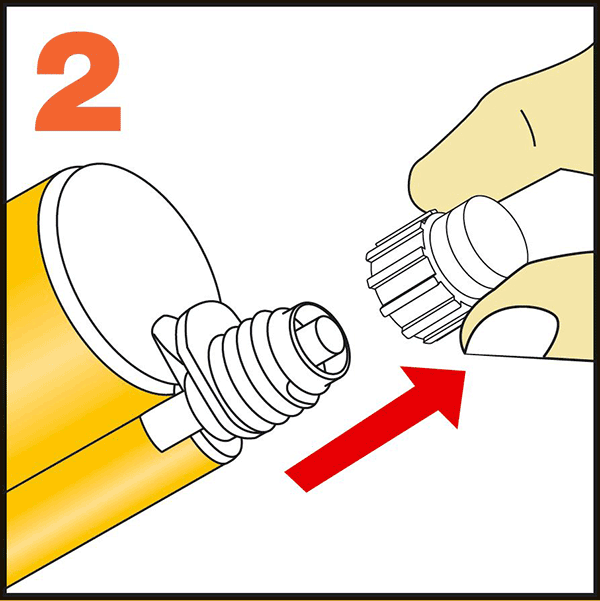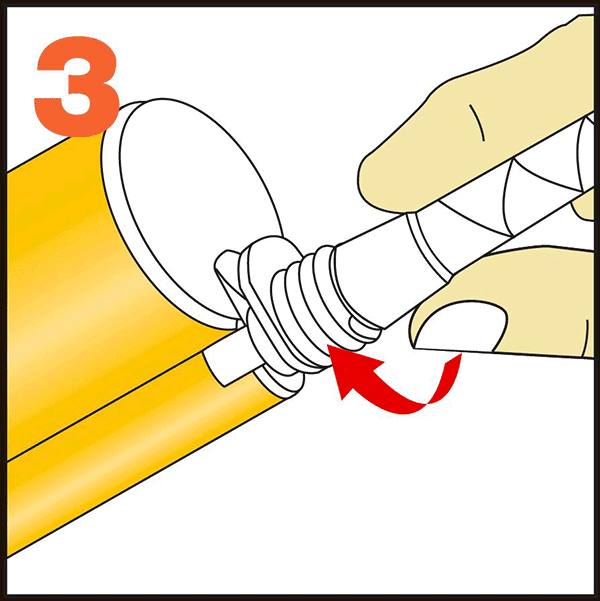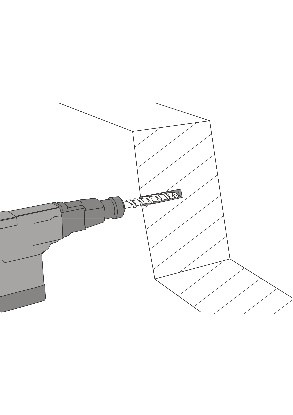
Sika AnchorFix®-2 Pro Tropical
Sika AnchorFix®-2 Pro Tropical is a 2-part epoxy acrylate anchoring adhesive for hot or tropical climate conditions. It is free of solvents and styrene.
- Fast curing
- Application with single-tube dispensers
- Very good load capacity
- Suitable for cracked and uncracked concrete
- Seismic testing C1 and C2 available
- Thixotropic: non-sag in vertical and overhead applications
- Styrene-free
- Low odour
- Low wastage
- Suitable for application to dry or wet concrete
- Suitable for application with flooded bore holes (except salt water)
Usage
The Product is used as a fast-curing anchoring adhesive for the following substrates and materials:- Reinforcing steel
- Threaded rods
- Bolts and special fastening systems
- Concrete
- Solid masonry
- Steel
- Hard natural stone
- Solid rock
Advantages
- Fast curing
- Application with single-tube dispensers
- Very good load capacity
- Suitable for cracked and uncracked concrete
- Seismic testing C1 and C2 available
- Thixotropic: non-sag in vertical and overhead applications
- Styrene-free
- Low odour
- Low wastage
- Suitable for application to dry or wet concrete
- Suitable for application with flooded bore holes (except salt water)
Packaging
165 ml standard cartridge | 12 cartridges per box 105 boxes per pallet |
300 ml standard cartridge | 12 cartridges per box 96 boxes per pallet |
380 ml coaxial cartridge | 12 cartridges per box 70 boxes per pallet |
825 ml side-by-side cartridge | 8 cartridges per box 39 boxes per pallet |
Refer to the current price list for available packaging variations.
Colour
Part A | off white |
Part B | black |
Part A+B | grey |
Product Details
CERTIFICATES AND TEST REPORTS
CE marking and declaration of performance based on European Technical Assessment ETA-21/0666. ETA issued on the basis of EAD 330499-01-0601 Bonded fasteners for use in concrete.
CE marking and declaration of performance based on European Technical Assessment ETA-21/0665. ETA issued on the basis of EAD 330499-00-0601 Bonded fasteners for use in concrete.
Shelf life
165 ml standard cartridge | 12 months from date of production. |
300 ml standard cartridge | 12 months from date of production. |
380 ml coaxial cartridge | 18 months from date of production. |
825 ml side-by-side cartridge | 18 months from date of production. |
All cartridges have the expiry date printed on the label.
Storage conditions
The Product must be stored in original, unopened and undamaged sealed packaging in dry conditions at temperatures between +5 °C and +25 °C. Always refer to packaging.
Refer to the current Safety Data Sheet for information on safe handling and storage.
Density
Part A+B mixed | 1.77 kg/l |
System structure
Ancillary products:
Sika AnchorFix® Flexible Extensions
Sika AnchorFix® Hole Cleaning Brushes Steel
Sika AnchorFix® Static Mixers / Nozzles
Sika AnchorFix® Straight Extensions
Sika AnchorFix® Resin Stoppers
Compressive strength
Cured 7 days at +20 °C | 60 N/mm2 |
Modulus of elasticity in compression
Cured 7 days at +20 °C | 4 500 N/mm2 |
Flexural-strength
Cured 7 days at +20 °C | 17 N/mm2 |
Tensile strength
Cured 7 days at +20 °C | 9 N/mm2 |
Electrical resistivity
3.6 × 109 Ω | (IEC 60093) |
Service temperature
TEMPERATURE RANGE T1
| Time | Minimum | Maximum |
| Long term | -40 °C | +24 °C. |
| Short term (up to 2 hours) | - | +40 °C |
TEMPERATURE RANGE T2
| Time | Minimum | Maximum |
| Long term | -40 °C | +50 °C. |
| Short term (up to 2 hours) | - | +80 °C |
Application
Mixing ratio
Part A : Part B | 10 : 1 by volume |
Layer thickness
Maximum | 5 mm |
Sag flow
Non-sag, even overhead
Material temperature
Maximum | +45 °C |
Minimum | +5 °C |
Ambient air temperature
Maximum | +45 °C |
Minimum | +10 °C |
Substrate temperature
Maximum | +45 °C |
Minimum | +10 °C |
Curing time
Temperature | Open time - Tgel | Curing time - Tcur Tcur is doubled for wet concrete |
+ 45 °C | 2 minutes | 20 minutes |
+40 °C to +44 °C | 4 minutes | 25 minutes |
+35 °C to +39 °C | 6 minutes | 45 minutes |
+30 °C to +34 °C | 10 minutes | 80 minutes |
+20 °C to +29 °C | 15 minutes | 145 minutes |
+15 °C to +19 °C | 20 minutes | 210 minutes |
+10 °C to +14 °C | 30 minutes | 5 hours |
SUBSTRATE QUALITY
Mortar and concrete must be older than 28 days.
Verify the substrate strength (concrete, masonry, natural stone). Perform pull-out tests if the substrate strength is unknown.
Make sure that the anchor hole is clean, dry, free from oil and grease. Remove loose particles from the anchor hole.
Clean threaded rods and reinforcement bars thoroughly. Remove oil, grease or any other substances and particles such as dirt.
MIXING
GETTING THE CARTRIDGE READY: 165 ML OR 300 ML
| 1. Unscrew the cap. | 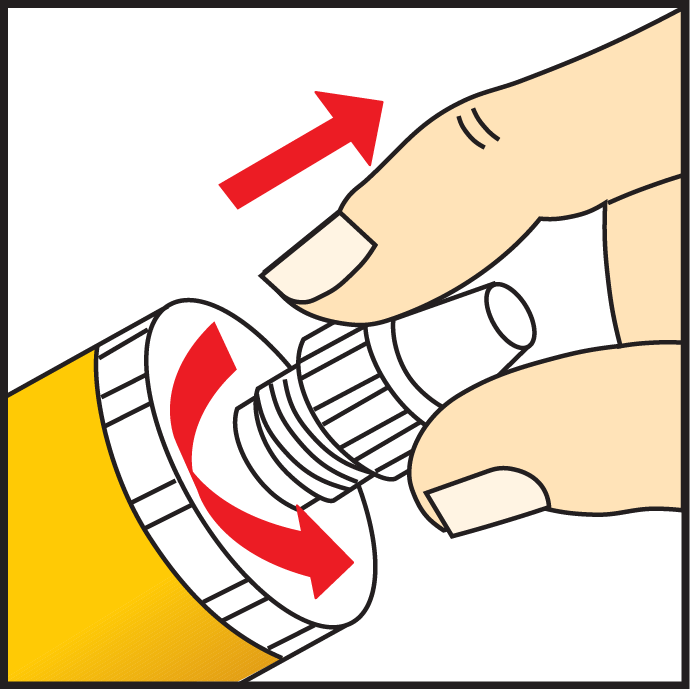 |
| 2. Cut the film | 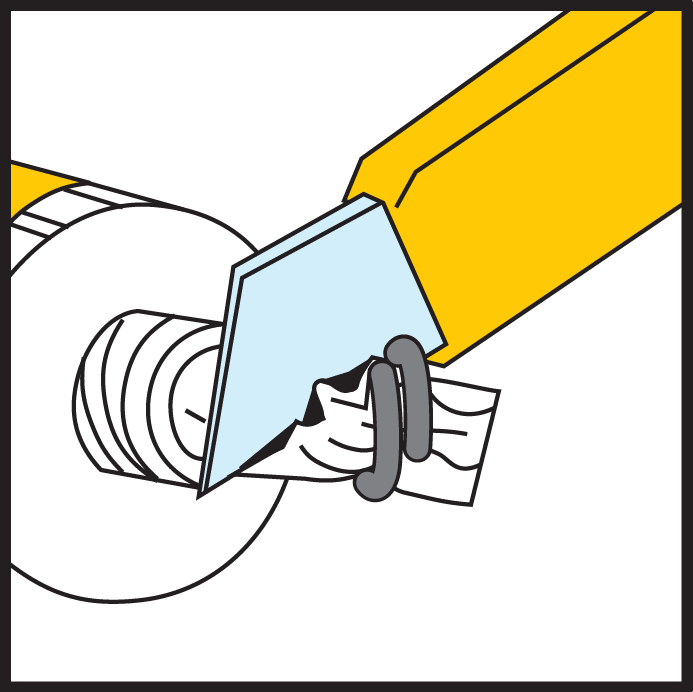 |
| 3. Screw on the static mixer. | 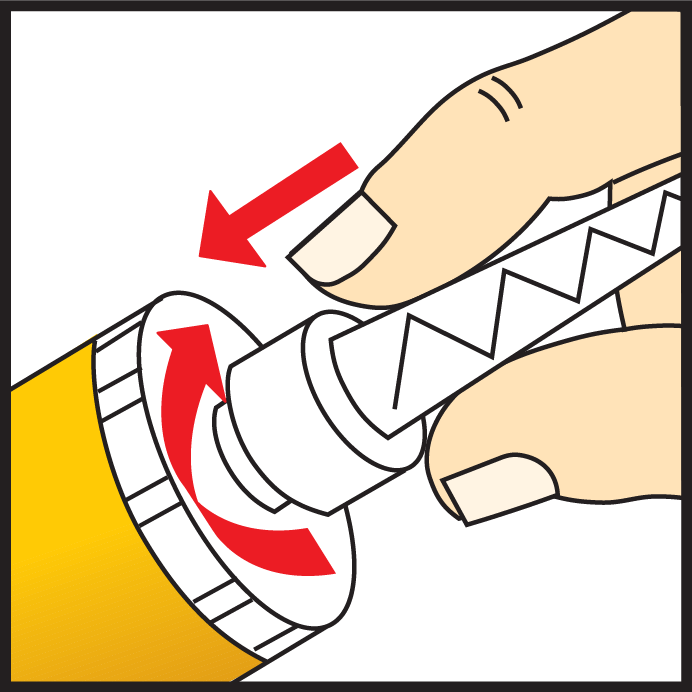 |
| 4. Place the cartridge into the dispenser and start application. | 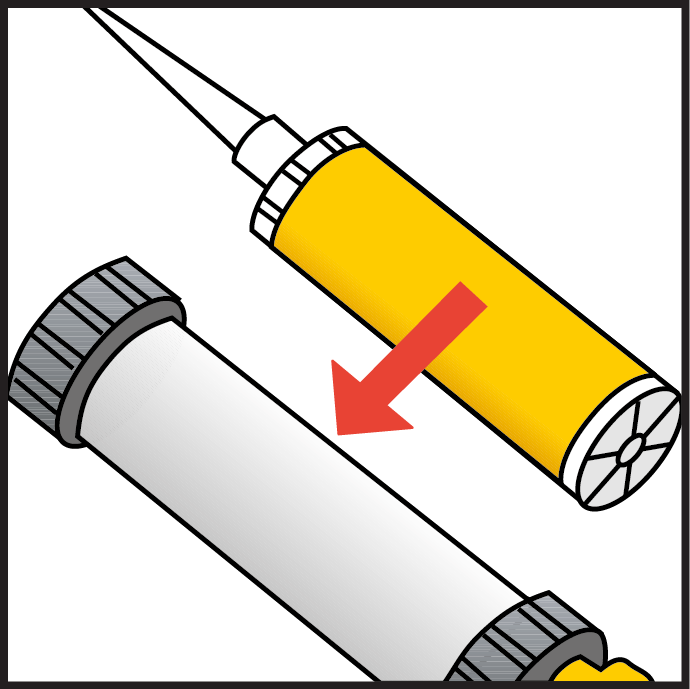 |
GETTING THE CARTRIDGE READY: 380 ML OR 825 ML
| 1. Unscrew the cap. |
|
| 2. Remove the cap. |
|
| 3. Screw on the static mixer. |
|
| 4. Place the cartridge into the dispenser and start application. | 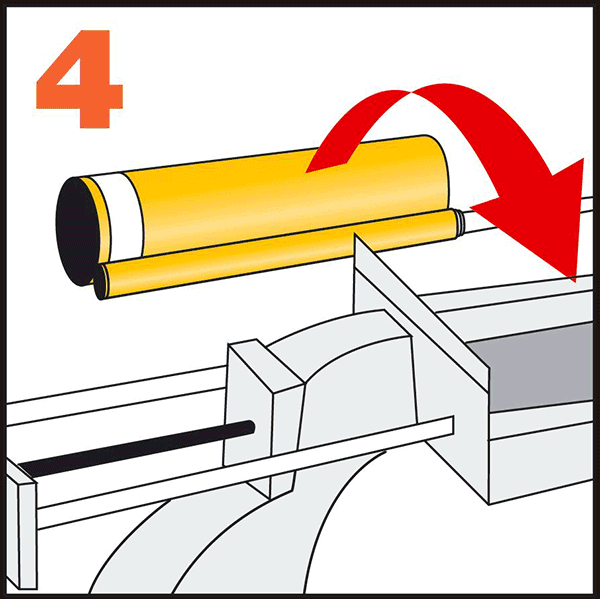 |
APPLICATION
Test if the Product is suitable for the substrate
Note: Due to the variety of possible substrates, the Product's suitability for the substrate must be confirmed before application, particularly in terms of desired bond strength, composition, porosity, potential surface staining or discolouration.
- Test the Product's suitability in a sample area.
Hardened material in the static mixer nozzle
Note: When work is interrupted, the static mixer nozzle can remain on the cartridge after the pressure of the sealant dispenser has been released.
- Attach a new nozzle if the resin has hardened in the nozzle when work is resumed
ANCHORS IN SOLID MASONRY OR CONCRETE
- Drill a hole with an electric drill to the diameter and depth required. IMPORTANT Make sure that the drill hole diameter is in accordance with the anchor size.
|
|
CLEANING DRILL HOLES WITH DIAMETER D0 ≤ ⌀ 20 MM AND EMDEDDED DEPTH ≤ 240 MM
-
IMPORTANT Use oil-free compressors. Clean the drill hole with a blow pump or by compressed air, starting from the bottom of the drill hole.
Note: Clean the drill hole a minimum of two times.
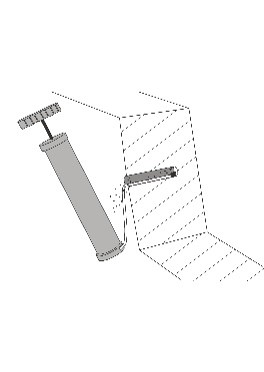
-
Thoroughly clean the drill hole with a steel brush.
Note: The diameter of the brush must be larger than the diameter of the drill hole. Clean the drill hole a minimum of two times.
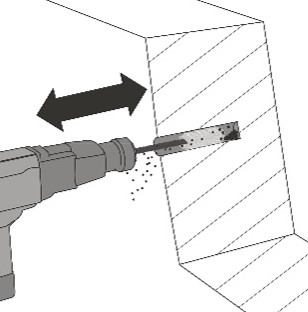
-
IMPORTANT Use oil-free compressors. Clean the drill hole with a blow pump or by compressed air, starting from the bottom of the drill hole.
Note: Clean the drill hole a minimum of two times.

CLEANING DRILL HOLES WITH DIAMETER D0 > ⌀ 20 MM AND EMDEDDED DEPTH > 240 MM
-
IMPORTANT Use oil-free compressors. Start from the bottom and clean the drill hole using an air lance, pressure: 6 bar (90 psi).
Note: Clean the drill hole a minimum of two times until the return air stream is free from dust.
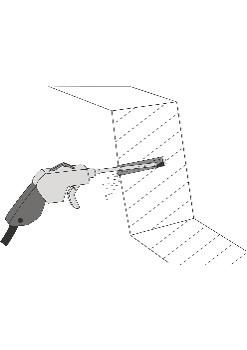
-
Thoroughly clean the drill hole with a steel brush.
Note: The diameter of the brush must be larger than the diameter of the drill hole. Clean the drill hole a minimum of two times.

-
IMPORTANT Use oil-free compressors. Start from the bottom and clean the drill hole using an air lance, pressure: 6 bar (90 psi).
Note: Clean the drill hole a minimum of two times until the return air stream is free from dust.

ADHESIVE APPLICATION
-
Pump the Product until both parts are extruded uniformly, with a consistent colour. IMPORTANT Do not use this material. Release the dispenser pressure and clean the cartridge nozzle with a cloth.
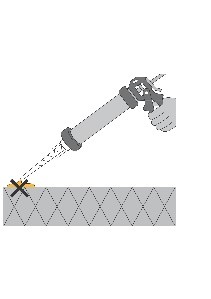
-
IMPORTANT Do not entrap air into the drill hole. Inject the Product into the drill hole starting from the bottom, while slowly drawing back the static mixer.
Note: For deep drill holes, extension tubing can be used.
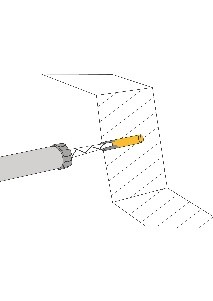
-
IMPORTANT Place the anchor within the open time. Insert the anchor with a rotary motion into the filled drill hole.
Note: Some adhesive must come out of the drill hole.
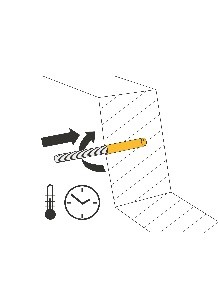
-
Do not load or move the anchor during the hardening time.
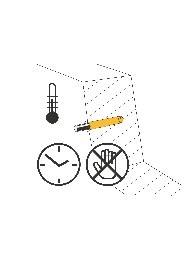
-
Immediately clean tools with Sika® Colma Cleaner.
-
Wash hands and skin thoroughly with warm soap water.
CLEANING OF EQUIPMENT
Clean all tools and application equipment with Sika® Colma Cleaner immediately after use. Hardened material can only be removed mechanically.
